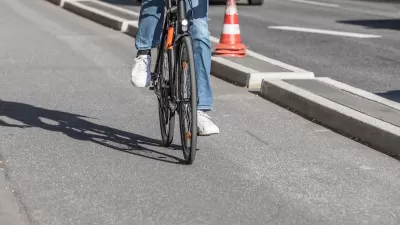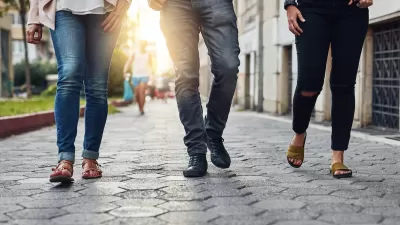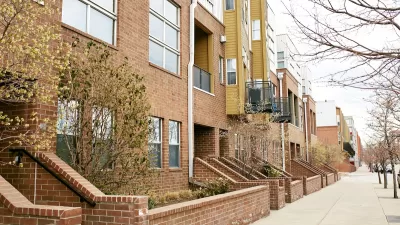While walking trips decline, driving is back to near-pre-pandemic levels.

“According to a new report from the mobility data analytics firm Streetlight, U.S. walking trips dropped by a stunning 36 percent between 2019 and 2022, despite a global respiratory pandemic that some hoped would encourage more pedestrian activity,” writes George Kevin Jordan in Streetsblog USA. Cycling rates also dropped slightly between 2021 and 2022.
The report shows that all 50 states and every major metro area lost walking activity, with some cities seeing drops as high as 49 percent. Meanwhile, driving is back to levels just 4 percent below 2019. “That's grim data for a country with serious milestones to reach in order to curb the impacts of climate change,” Jordan writes. The report attributes the decline in part to the mobility shifts spurred by the growth of remote work and the higher rates of car ownership in recent years.
However, there are bright spots: “in some communities, the trend may already be turning around. Between 2021 and 2022, California and New York experienced a 13 and six percent increase in walking activity, respectively, while D.C. topped the charts with a 32 percent year-over-year spike.” Other cities can promote similar patterns through quick-build interventions that make walking safer and more attractive—“at least while they work towards more permanent types of traffic calming and land use reform that makes walking a natural choice.”
FULL STORY: Report: Americans Are Walking Less As Pedestrian Deaths Rise

Alabama: Trump Terminates Settlements for Black Communities Harmed By Raw Sewage
Trump deemed the landmark civil rights agreement “illegal DEI and environmental justice policy.”

Planetizen Federal Action Tracker
A weekly monitor of how Trump’s orders and actions are impacting planners and planning in America.

The 120 Year Old Tiny Home Villages That Sheltered San Francisco’s Earthquake Refugees
More than a century ago, San Francisco mobilized to house thousands of residents displaced by the 1906 earthquake. Could their strategy offer a model for the present?

In Both Crashes and Crime, Public Transportation is Far Safer than Driving
Contrary to popular assumptions, public transportation has far lower crash and crime rates than automobile travel. For safer communities, improve and encourage transit travel.

Report: Zoning Reforms Should Complement Nashville’s Ambitious Transit Plan
Without reform, restrictive zoning codes will limit the impact of the city’s planned transit expansion and could exclude some of the residents who depend on transit the most.

Judge Orders Release of Frozen IRA, IIJA Funding
The decision is a victory for environmental groups who charged that freezing funds for critical infrastructure and disaster response programs caused “real and irreparable harm” to communities.
Urban Design for Planners 1: Software Tools
This six-course series explores essential urban design concepts using open source software and equips planners with the tools they need to participate fully in the urban design process.
Planning for Universal Design
Learn the tools for implementing Universal Design in planning regulations.
Clanton & Associates, Inc.
Jessamine County Fiscal Court
Institute for Housing and Urban Development Studies (IHS)
City of Grandview
Harvard GSD Executive Education
Toledo-Lucas County Plan Commissions
Salt Lake City
NYU Wagner Graduate School of Public Service





























